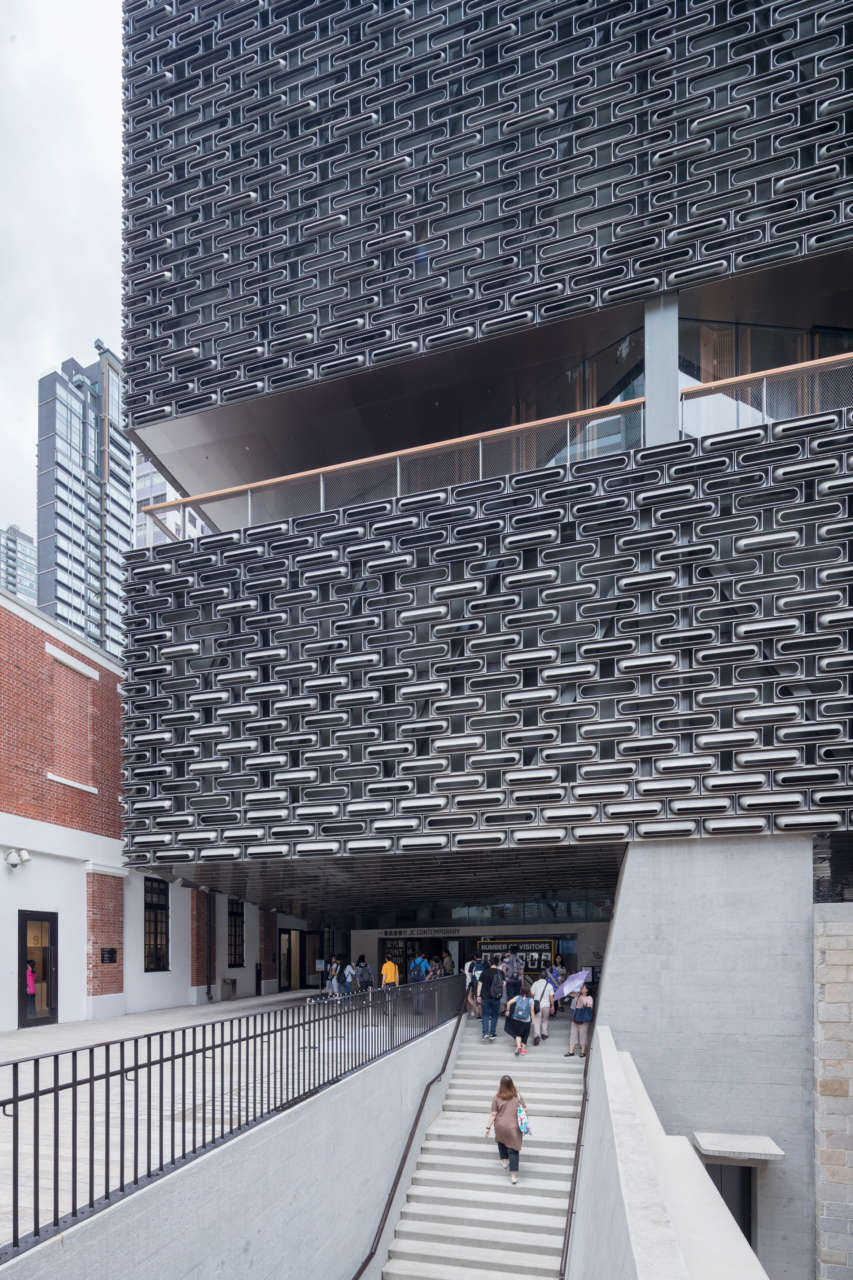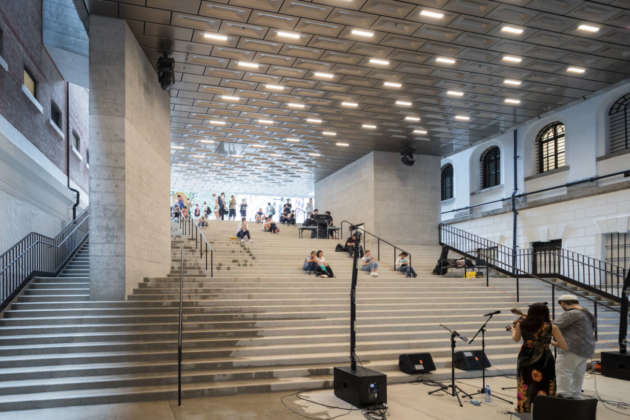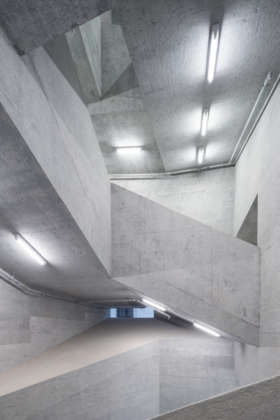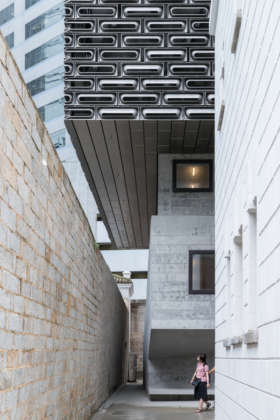After 12 years of heritage conservation and revitalization, a major new arts complex has opened to the public in Hong Kong. the site, which is located the commercial center of hong kong island, has been transformed from a compound of 16 police buildings by swiss architecture firm Herzog & De Meuron. the design team sought to maintain the destination’s openness — a rare characteristic for a site in one of the world’s densest cities.

The complex includes two new buildings: JC contemporary, a gallery building with a contemporary art space; and JC cube, an auditorium building for the performing arts, film screenings, educational events, and more. both new buildings are clad with a façade unit system of 100% recycled cast aluminum, a material that sets the structures apart among the site’s masonry blocks.
Important new connections have been created between the two buildings, including a covered outdoor stair — known as the ‘laundry steps’ — that can be used for a host of events and live performances. meanwhile, the prison yard and the parade ground will also become performance spaces for theater, music, dance and film, with a wide range of programming to appeal to all audiences.

The new interventions are conceived as two distinct volumes but with a simple and regular composition: they maintain the horizontal character of the site preserving the existing open spaces and carefully inserting new elements within the existing fabric. In the south-west part of the site, the "Old Bailey Wing" is located between the current F Hall and Ablutions Block. Arbuthnot Wing, located in the south-east part of the site, is inserted between the E Hall and the Hall D. At the level of the ground floor are created large open spaces but protected, open to the city. At the same time, these urban gaps shape the pedestrian flow that connects Artbuthnot Road and Staunton Street through the Old Prison Yard.
The cladding used for the new façades is a distinctive element compared to the existing fabric: the volumes are in fact covered with recycled aluminum elements taking up the design of the wall fabric, typical of the city, reinterpreted in a contemporary key. This particular exterior texture provides the solar shading necessary for the sub-tropical climate of Hong Kong. The rough effect of aluminum helps to reduce the reflection of daylight; at night the lighting emitted by the building will be partially shielded from the same texture but allowing at the same time to tell the city the activities that take place inside.








